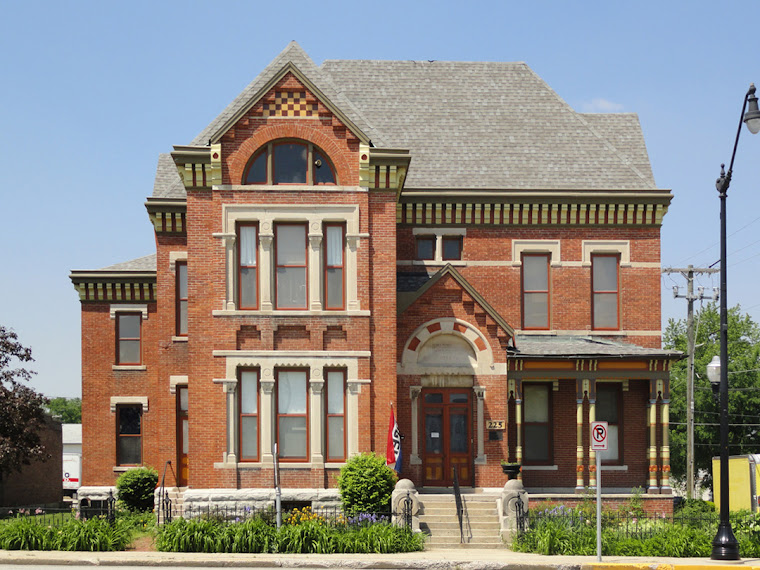Less than six months after the jail opened, Montgomery County officials noticed heating issues with the Rotary Jail. The contractors made minor adjustments to the boiler below the cell block, but problems persisted. In August 1887, County Commissioners reviewed bids for a new heating system. They chose J. H. Kirkhoff of Indianapolis to build an off-site heating unit that would supply heat for the jail and the County Courthouse through underground pipes. Kirkhoff’s plan also called for the optimum temperature to be lowered from 70° to 65°. The engine house, or steam plant, a one-story brick and stone building with a slate roof, was built just west of the jail by Sherman Craig.
Craig was given 54 days to complete the contract. The corner stone was laid August 31, 1887, and the foundation was completed by September 7. Contractors even worked on Sundays to ensure that the job would be completed on schedule. In October, the Commissioners received a report about issues with the 71 foot-tall brick stack and work stopped briefly. After the Commissioners were assured that the stack was satisfactory, work resumed. In mid-November, testing on the system began. Heat from the boilers failed to reach the second story of the courthouse. Too much steam from the underground pipes was creating a hazard at the intersection of Washington and Market Street. Although the courthouse received its own boiler, the Rotary Jail continued to use the boiler in the steam plant until 1928, when new heating and plumbing was installed.
The steam plant building was used as a garage and then a storage area for the museum for many years. In February 2009, the Board of the Rotary Jail Museum voted to move forward with renovation of the building. After securing multiple grants, construction began. The plan called for adding heat, air conditioning, and electricity, while retaining the historical integrity of the building. Additionally, a kitchenette, handicapped accessible ramp and bathroom, and a kiln were installed. The majority of the project has been completed.
On September 17, 2011, the building was renamed the Tannenbaum Cultural Center. The museum plans to use the Tannenbaum Cultural Center for art classes, lectures, rentals, and other special events.
 |
| The Civic Band practicing in the newly renovated Tannenbaum Cultural Center |

